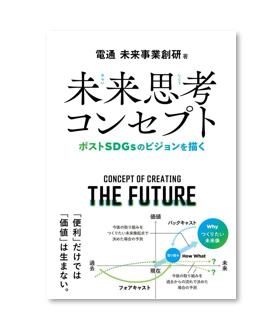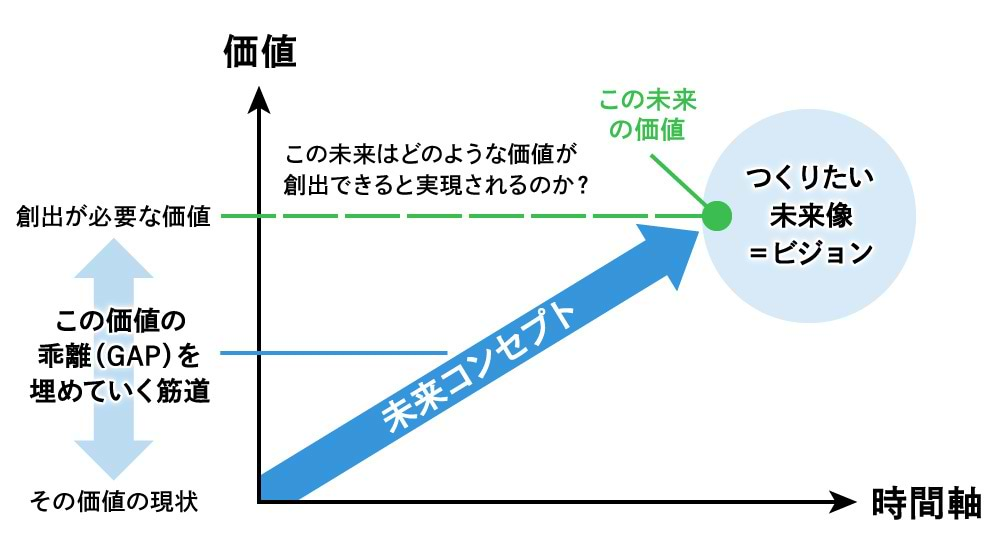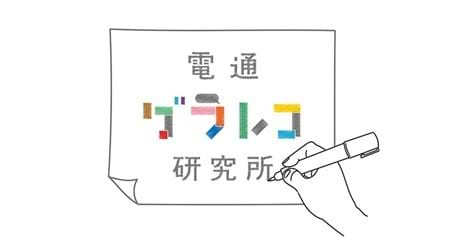Note: This website was automatically translated, so some terms or nuances may not be completely accurate.
Drawing inspiration from history! Examining the future concepts that shaped the "present."

In June 2025, the Dentsu Group cross-organizational unit "Future Business Creation Research" published its first book, " Future Thinking Concepts: Shaping a Post-SDGs Vision ." This series explains the "future concept" theme of the book while offering hints on how to utilize "the future" in business.
In this second installment, we focus on historical figures who shaped their eras, examining what futures they envisioned and how they moved society. Akane Yamada of the Future Business Creation Lab explores the process of bringing these envisioned futures to life.
History reveals both visible and invisible aspects, and interpretations vary among individuals. The historical figures and episodes featured here are introduced solely as one "essence connected to future thinking."

"Future Thinking Concepts: Shaping the Post-SDGs Vision"
Published by: Cross Media Publishing / Editor: Dentsu Inc. Future Business Research Institute
With the post-SDGs era approaching, and challenges being discussed more readily than hopes for the future, this book practically summarizes the importance of valuing the idea that "the future is not something to be predicted, but something to be created," and the necessity of envisioning "the future we want to create," intertwining business and the future.
Did historical figures who achieved great feats possess future concepts!?
As introduced in Part 1, the "Future Concept" advocated by the Future Business Research Institute is a verbalized guideline for envisioning the "future you want to create" and determining how to advance the necessary businesses and activities to realize that future.

While "Future Concept" might sound like a novel idea, in fact, throughout history and across all fields, figures who inspired people and changed the world all clearly articulated "what kind of future they wanted to create and what they would do to achieve it." In other words, a clear vision and the roadmap to reach it—the Future Concept—served as the driving force that moved people and society, transforming reality.
For example, Prince Shōtoku enacted the Seventeen-Article Constitution to prevent conflict. The phrase in Article 1, "Harmony is to be cherished," signifies that harmony and unity among people are essential for any endeavor. This can truly be seen as the future concept Prince Shōtoku envisioned for his time.
Driven by the conviction to create a peaceful world, Tokugawa Ieyasu employed the means of unifying the nation. He ended the prolonged era of war and brought an age of stability and order to Japan.

Looking back at history, we see that approaches to creating the future are not singular. Even when sharing the same desire for "a future without conflict," some advocate unification through force, while others pursue an approach that seeks to eliminate strife through understanding. While the desired future may be the same, the future concepts that lead to it are diverse and unique to each person. This diversity is also an important hint when contemplating the future.
A "Man of Peace" Who Envisioned a Future Leading to Today
Let's delve deeper into another example of a pioneer who envisioned a future connected to the present: former President of the Republic of South Africa, Nelson Mandela (1918–2013), who possessed a clear "vision of the future he wanted to create" and a well-defined future concept. The process through which he realized this desired future offers numerous highly instructive and referenceable points, making it one of the essential elements for future thinking.
The "future he envisioned" was a society where everyone could live with dignity and freedom, regardless of skin color or background. At that time in South Africa, a small minority of white people held political and economic power, and the policy of racial segregation (apartheid), which isolated and discriminated against black people, had been enforced for a long time. Mandela led the anti-apartheid struggle under these circumstances and was forced to endure 27 years of imprisonment. Yet after his release, he chose not a future where "the victors crush the vanquished," but one where "the ruling class and those who suffered discrimination rebuild the same nation together." In other words, he aimed not for retaliation, but for "forgiveness" and "coexistence" – accepting each other's differing ideologies and moving forward together.
Interpreting this in my own way, the future concept Mandela envisioned is:
"Creating peace and coexistence through forgiveness and dialogue."
What's remarkable is that he didn't leave this concept as just an idea; he turned it into a system.
Harnessing the power of symbols, shared by all
The apartheid policy, codified into law in 1948, was abolished in 1994. That same year, Mandela became president through South Africa's first democratic general election. However, the resentment from past racial discrimination ran deep, and the country remained in a state where the oppressed continued to struggle against the oppression of the ruling class.
Thus, in 1995, Mandela used the Rugby World Cup hosted in his country as an opportunity to strive to end racial division.
In fact, rugby was a sport popular among the ruling class in South Africa at the time. The national rugby team was composed of white players, symbolizing the ruling class during the apartheid era. Consequently, even within the ruling party led by Mandela at the time, there was strong sentiment advocating for the abolition of the national rugby team. Mandela, however, deliberately supported its continuation, championing the slogan "One Team, One Country."
He visited the team's training camp to speak with players and staff, encouraging the national team to visit townships and engage with schools and hospitals. He conveyed a message to white fans urging respect for black communities, and to black fans calling for united support of "this team."
Then came the day of the World Cup final. The stadium, once filled with spectators from the privileged class who had resented Mandela, erupted in a chorus of "Nelson!" as the South African national team claimed victory. The scene at the award ceremony, where Mandela, wearing the national team jersey, presented the trophy, was the moment that redesigned the "symbol of division" into a "shared source of pride."
The nation designed an experience where the ruling class and those who had suffered discrimination sat together in the same stands, cheering for the same team, and shared this experience.
Furthermore, the Truth and Reconciliation Commission (TRC) was established to publicly address past violence and injustice, institutionalizing a process of apology and forgiveness. It wasn't just about proclaiming ideals; it was about embedding them into systems. This is the core of his future concept: "Creating peace and coexistence through forgiveness and dialogue."
※Truth and Reconciliation Commission: A commission established to investigate and document past serious human rights violations and social conflicts, listen to victims' voices, and aim for societal reconciliation and reconstruction.

Creating a Shared Story: "The Rainbow Nation"
Another core element of Mandela's future concept is "creating a shared narrative."
Mandela chose to call South Africa the "Rainbow Nation." He likened the diversity of different races and cultures living together in one country to a multicolored rainbow. Different colors, when placed side by side, create beauty rather than muddiness. He embedded this message into the national flag, the national anthem, and sports. Mandela's design philosophy was that the future is not built on accumulated endurance, but is propelled by a shared narrative.
Mandela's concept of the future offered a methodology implementable in a world where conflict is normalized. His legacy teaches us that peace is not merely wished for, but designed and implemented through forgiveness, dialogue, symbolic redesign, institutionalization, and shared narratives.
Hints for the Present, and for the Future
So how has the "future of his time" that Mandela created been passed down to the world today? I believe Mandela's vision for the future is being realized in three directions.
1. Codification of Rights
South Africa's new constitution (adopted in 1996) after the end of apartheid explicitly prohibited discrimination not only based on race but also on gender, gender identity, and sexual orientation. Furthermore, it legalized same-sex marriage (enacted in 2006). This approach of codifying anti-discrimination laws is spreading globally, with prohibitions on hate crimes and discrimination in marriage and employment becoming firmly established. By legally defining who should be protected from disadvantage in specific contexts, diversity has advanced significantly.
2. Visualizing Truth and Reconciliation
The procedures of South Africa's Truth and Reconciliation Commission are said to have been applied to issues surrounding Canada's residential school system for Indigenous peoples, as well as to investigations of human rights abuses across South America, Africa, and Europe. The process involves making the facts of perpetration and victimization public, documenting them, and designing necessary apologies and reparations. It creates a mechanism to "visualize" the history of discrimination, preventing it from being buried in darkness, and linking it to preventing future recurrence.
3. Redesigning Symbols and Language
South Africa recognized 11 official languages and incorporated multiculturalism into its flag and national anthem. Since then, efforts to embed diversity into everyday life have spread globally: public displays of indigenous languages, their introduction into school education, and multilingual use in sports teams and ceremonies. Mandela's initiatives were the starting point.
"Provisions prohibiting discrimination," "institutions confronting the past," and "symbols visualizing multiculturalism." The future Mandela envisioned continues to be passed down to the world today through these three concrete elements. I felt that peace isn't just something to wish for; it's by building upon these three pillars that diversity is transformed into a "living reality." Looking ahead, I believe the trend will be toward creating societies increasingly resistant to discrimination, not through emotion but by institutionalizing systems and operationalizing them.
Mandela's sequence is also clear: concretize what landscape to share with whom, choose forgiveness and dialogue as means, and translate them into symbols and systems for operation. Diversity shifts from something "proclaimed" to something "functional." This future, where initiatives based on future concepts permeate daily life, extends beyond mere ideals.
Future concepts become the power to shape the next generation!
The historical figures we've examined—Mandela, Prince Shotoku, Tokugawa Ieyasu—each possessed a clear vision of "the kind of society they wanted to create" and a robust "future concept" serving as the central axis for realizing it. Their common thread was a strong desire to improve society or their organizations, coupled with their own concepts and methods to achieve it. Precisely because their "vision of the future they wanted to create" was concrete and high-resolution, it could be applied to actual means and institutional design, becoming the power to shape the next generation.
The book "Future-Oriented Concepts: Shaping a Vision Beyond the SDGs" also organizes and introduces successful case studies from companies and local governments using the structure of "Desired Future Vision → Future Concept → Concrete Methods." The examples we can already present as interesting initiatives today are the result of confronting the task of defining a "Desired Future Vision" at some point in the past.
Reflecting on history and considering how the "norms" of that time changed helps us ask: What will we value ten years from now? How will today's "norms" evolve in the future? And how do I or my company want to engage with that future?

The present of the past is, in a sense, our future. The visions and concepts of the future imagined by those who came before us are packed with perspectives we can learn from today. However, to paint this "desired future vision," it is also essential to understand and confront the changes that the future will bring.
Starting next time, members of the Future Business Creation Research Institute will explore signs of the future by theme, seeking answers to the question: "How can we realize a better future for people and society?" Stay tuned!
Related Information:
Future Craft Process: A Program to Visualize the Future and Create Future Businesses
References:
・Nelson Mandela's Life: The Never-Ending Fight Against Racism (National Geographic Japan Edition Website)
・Richard Stengel, "Living by Belief: The Philosophy of Action of Nelson Mandela" (Kindle Edition)
・The Constitution of the Republic of South Africa
・South African Government
・South Africa: The "Rainbow Nation" South Africa - The Diversity Aimed for by the Late President Mandela Today (Amnesty Japan)
・Truth and Reconciliation Commission of Canada (Government of Canada: TRC)
・National anthems / Ngā ngaringari (New Zealand Government)
・Rugby and South Africa (South African Tourism)
・Film "In My Country" (DVD)
[Graphic Report Production: Chiharu Kai, Representative, Dentsu Inc. Graphic Recording Institute]
Dentsu Graphic Recording Institute is a cross-group project team within the Dentsu Group dedicated to providing and researching visualization services centered on graphic recording and facilitation. We depicted the core message the author of this article most wanted to convey within the worldview of the Future Thinking Concept.https://www.dentsu.co.jp/labo/grareco/index.html

The information published at this time is as follows.
Was this article helpful?
Newsletter registration is here
We select and publish important news every day
For inquiries about this article
Back Numbers
Author

Akane Yamada
Dentsu Inc.
Marketing Division 4
Born in 1989. Engaged in business development through backcasting from visualizing future lifestyles at Dentsu Group's cross-organizational unit "Future Business Research Institute." On weekends, a mom influencer. Enjoys deciphering trends and analyzing insights. Obtained a national certification as a Career Consultant during parental leave; also focuses on social contribution and career education initiatives that can be started today.


